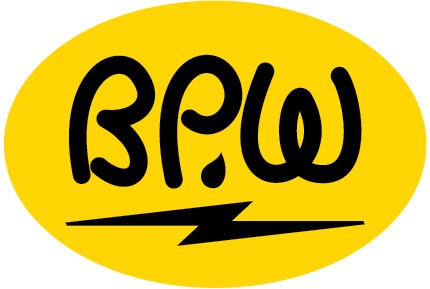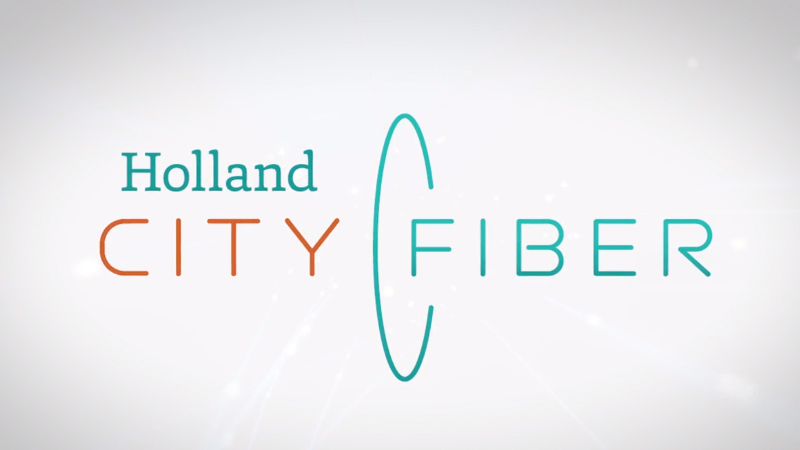Holland BPW’s core function is to provide outstanding utility services and to operate infrastructure - that includes 30 years of experience with fiber optic broadband.
Fiber-optic broadband is the highest quality infrastructure for broadband available. Constructed of tiny transparent fibers, information travels through the cable at the speed of light. The only thing that limits the speed is the technology that is connected to it, making fiber incredibly future-enabling. Fiber also immediately improves speed and reliability. Read more to learn about the benefits of community-owned fiber-to-the-home infrastructure.
Fiber is Future-enabling
“Fiber will enable the next generation of applications that depend on high-throughput, low-latency, high-reliability connections” (Cyphers, 2019). Technology is evolving fast—really fast. We continually see more devices connect to the internet to provide information, data storage, and personalized user experiences. From wearables to home appliances, our dependency on broadband is increasing, pushing the demands on internet connections further all the time. Eventually, the bandwidth currently achievable with standard copper infrastructure will not be able to meet our community’s needs. “Future advancements in other technologies will rely on fiber. Fiber-to-the-home is the best option for reliable, high-throughput, and future-proof last mile connections today” (Cyphers, 2019).
Fiber is a Long-term Investment
Fiber is a worthwhile long-term investment because it sustains decades without breaking down. “Fiber infrastructure will soundly outlast copper-based systems and require far less maintenance in the process” (Cox, 2020). Fiber is made up of tiny strands of glass that are resistant to natural exposure to the elements. “Glass materials simply aren’t vulnerable to the same corrosive, oxidizing forces seen in a metallic material like copper. Neither do fiber cables transmit electricity—only light pulses, giving them further protection against deterioration” (Cox, 2020). Copper, on the other hand, naturally corrodes and wanes from carrying electricity over time.
Fiber is Fast
“Fiber-optic cables are simply faster than any other available delivery medium—and the differences are huge” (Cox, 2020). Fiber transmits signals as light, where copper relies on electrical signals. The speed of light is faster than the rate electrons can travel through a wire. Plus, copper brings more opportunities for signal deterioration, resulting in a slower, lower quality output. Fiber signals can be affected by imperfections in the glass, but the biggest limitation on its speed is the technology connected to it. As new technology is implemented, fiber infrastructure will be able to keep up.
Another huge plus for fiber is symmetrical download and upload speeds. Typical broadband has a faster download and a much slower upload speed. With fiber, the upload and download speeds are equal. This is beneficial for anyone who shares large files, uses cloud backup services, or works with high resolution images and video.
Today’s fiber speeds are 1000 MB/s, 10 times faster than the average 100mbps internet connection. That means you can download a two-hour HD video right when you want to watch it.
A 2 hour 4K video is about 11.4 Gigabytes. Here’s the comparison of download times:
- 10M connection – 2 hours 43 minutes
- 50M connection – 32 minutes
- 100M connection – 16 minutes
- 1000M connection – 1 minute 37 seconds

Better TV and Gaming - If you have a have a 4K TV or enjoy gaming, with fiber you will experience faster, higher-quality streaming.
Fiber is Reliable
Connecting multiple devices to the internet on one network is common today. Households need enough bandwidth for all members to engage in different ways. For example, one person might be streaming high definition videos on TV, another running a web conference, while others play video games. The more you add to the mix, the more bandwidth you need. “Bandwidth helps determine how much information a channel can transmit: more bandwidth means more information capacity” (Cyphers, 2019). It takes a lot of capacity to run all the devices and apps that today’s technology demands. “Fiber links provide over 1,000 times as much bandwidth as copper and can travel more than 100 times further as well” (Multicom, Inc).
“Electrical and radio signals from other devices and systems can interfere with the transmission of data through copper wiring, creating potential disruptions in smooth internet delivery” (Cox, 2020). If you have ever been on a web conference or VOIP call where the sound and video freezes or hangs, you have experienced latency and jitter issues. “Latency is responsible for the constant small delay between you speaking and the other person registering your voice, while jitter is responsible for glitches, freezes, and other distortions in the stream” (Cyphers, 2019). The quality of output is much more reliable with fiber, giving you a stable connection that you can count on.
There is a limit to how much information can be carried through a channel. The channel’s limit is determined by the amount of bandwidth and noise. Copper has a lower bandwidth and is more susceptible to interference and noise, which means the maximum amount that copper can carry in a signal is less than fiber can carry. ISPs become concerned overloading their channels and may use throttling to prevent outages during high usage times. Fiber doesn’t need to be throttled because it is less susceptible to overload.
BONUS: Fiber Can Boost Your Home’s Value
“Having access to fiber internet can potentially increase your home’s resale value—or so suggests a 2015 study conducted jointly by the University of Colorado at Boulder and Carnegie Mellon University, and funded by Fiber to the Home Council Americas, among others” (Cox, 2020). We heard a lot about this during the broadband listening tour, where we met various demographic groups to learn about current access and needs related to broadband in our community. Kyle Geenen, local real estate professional, explained “prospective home buyers ask about good internet.” Broadband is an essential need that affects where people can live. Homes without access sell for less.
Resources
Cyphers, B. (2019, October 17). The Case for Fiber to the Home, Today: Why Fiber is a Superior Medium. Electronic Frontier Foundation.
https://www.eff.org/wp/case-fiber-home-today-why-fiber-superior-medium-21st-century-broadband
Cox, R. (2020, November 6). Five Reasons Why Fiber is the Future of Home Internet. GVEC. GVEC.Net.
https://www.gvec.net/five-reasons-why-fiber-is-the-future-of-home-internet/
Multicom, Inc. (n.d.). Copper vs. Fiber - Which to Choose? Multicom. https://www.multicominc.com/training/technical-resources/copper-vs-fiber-which-to-choose/


